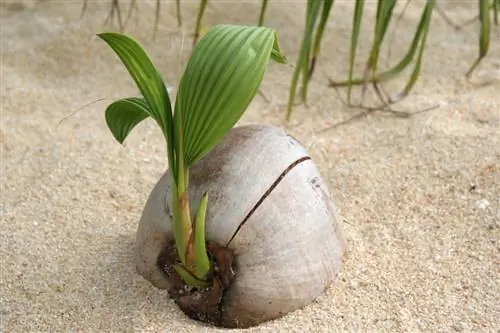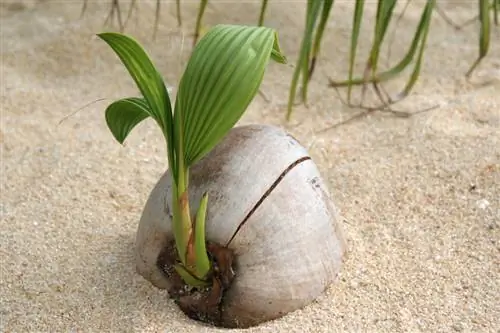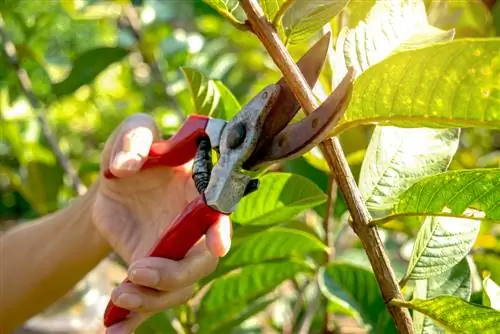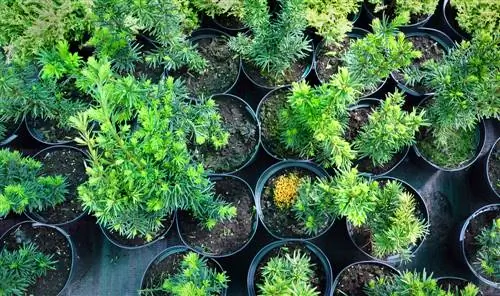- Author admin [email protected].
- Public 2023-12-16 16:46.
- Last modified 2025-01-23 11:20.
Coconut palms are usually sold in plant pots. However, sometimes these are too small and the palm tree should be repotted immediately. Planting outdoors is only recommended in tropical climates.

How to plant a coconut palm?
To plant a coconut palm, you need a fresh coconut, half planted in substrate and watered regularly. The palm prefers a warm, sunny location with high humidity and temperatures above 18 °C.
The ideal location
The ideal location for a coconut palm is sunny and warm with high humidity. The temperature should not fall below 18 °C even at night. Only young plants tolerate partial shade; adult palms need 12 hours of light daily. In summer, your coconut palm also feels at home on the balcony or terrace. If it gets cold at night, she should sleep indoors.
How often do coconut palms need to be repotted?
Coconut palms should be repotted every two to three years because their roots need a lot of space. Be careful not to damage the delicate roots. The top half of the coconut should always stick out of the ground, this is not a sign of lack of space.
How much water does a coconut palm need?
Coconut palms need a lot of water, but don't like waterlogging. Therefore, water your coconut palm regularly. Since it also loves heat, use lukewarm water. If your water is very hard, then rainwater is a good alternative.
Watering tips:
- water regularly
- no waterlogging
- no cold water
Can you grow coconut palms yourself?
If you have a lot of patience, you can grow a coconut palm yourself. To do this, you need a coconut that is as fresh as possible, half of which you plant in a pot with substrate and water well. Cover the pot and coconut with a clear plastic bag and place it in a warm, bright place.
The temperature should be around 20°C to 30°C and you should have a lot of patience because germination takes six months or longer. Alternatively, buy a pre-germinated coconut with one or two cotyledons already, which is available relatively cheaply.
Which soil does a coconut palm need?
Coconut palms like a mixture of sand and potting soil, possibly also clay. The substrate should be permeable and nutrient-rich. Fertilization is only necessary twice a year, otherwise the plant will grow too quickly.
Tips & Tricks
Do not use cold tap water for watering, but rather lukewarm or rainwater. Ensure there is sufficient humidity to prevent your palm tree from being attacked by spider mites.






